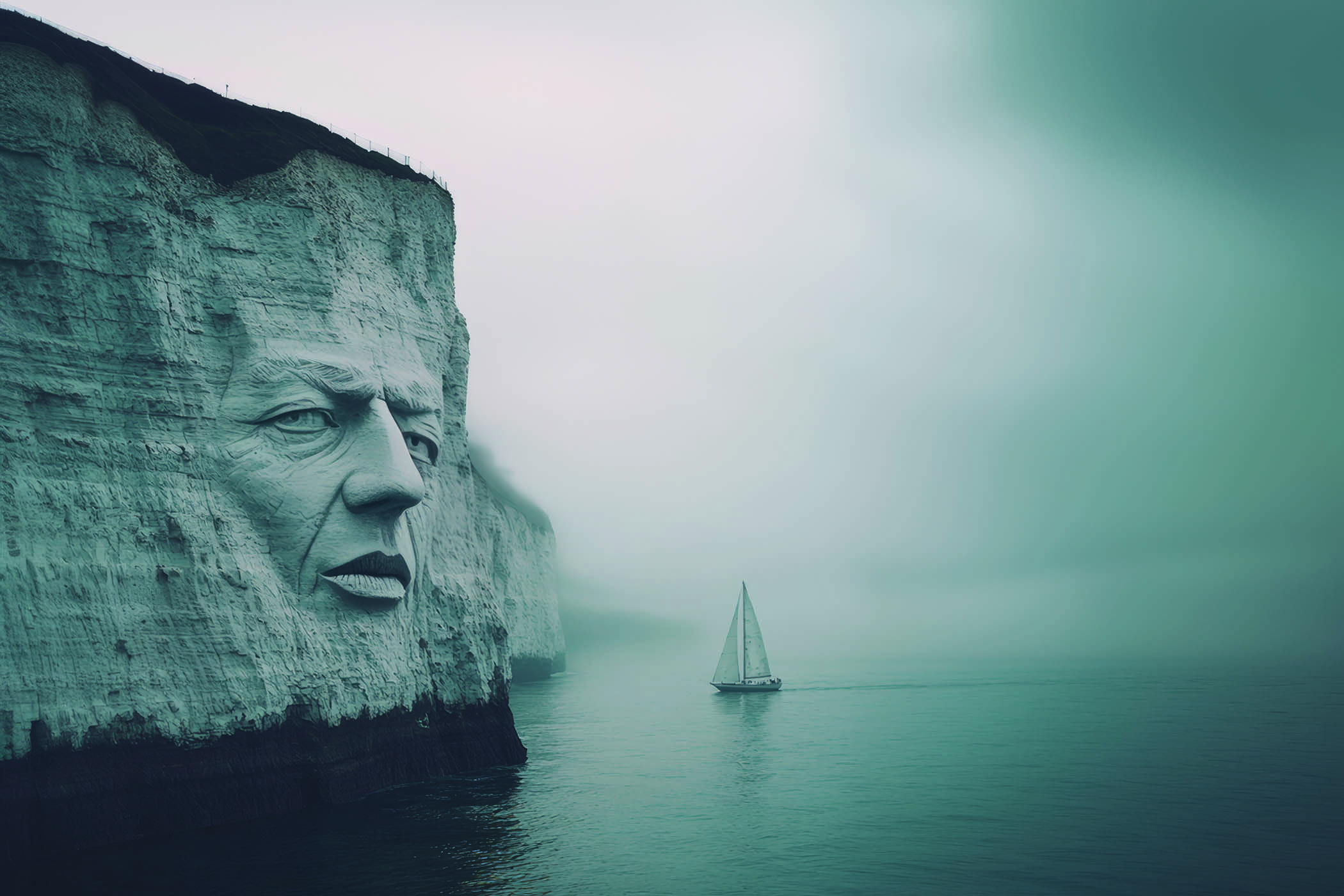Images byPhillip Toledano
When Phillip Toledano gets an idea into his head, he tends to pursue it obsessively to the point where you begin to worry about his sanity. In 2012, after a series of deaths in his family, the London-born photographer-artist wondered what other terrible things life might have in store for him. First, he took a DNA test, to find out what illnesses he was likely to get, and sought predictions from fortune-tellers, tarot readers and numerologists. Then he worked with a prosthetics expert to become different versions of his future self – the alcoholic, the white-collar crook, the nonagenarian dementia patient. The project, entitled Maybe, took him three years to complete and involved an acting coach, stylists, photo assistants and numerous extras. It was warmly received upon its publication in 2015 but Toledano says he hated every second of making it. It didn’t help that, as well as being time-consuming, it was very expensive to produce.
Now, a decade later, he’s publishing a book that focuses on a reimagined past, rather than various unpalatable futures, with the help of just one collaborator: the AI-powered image generator Midjourney. The images in Another England are far more elaborate than anything Toledano produced during his years as a photographer, yet they cost him hardly anything to make and he found the process a lot more enjoyable. This time, however, the responses have not been universally positive.
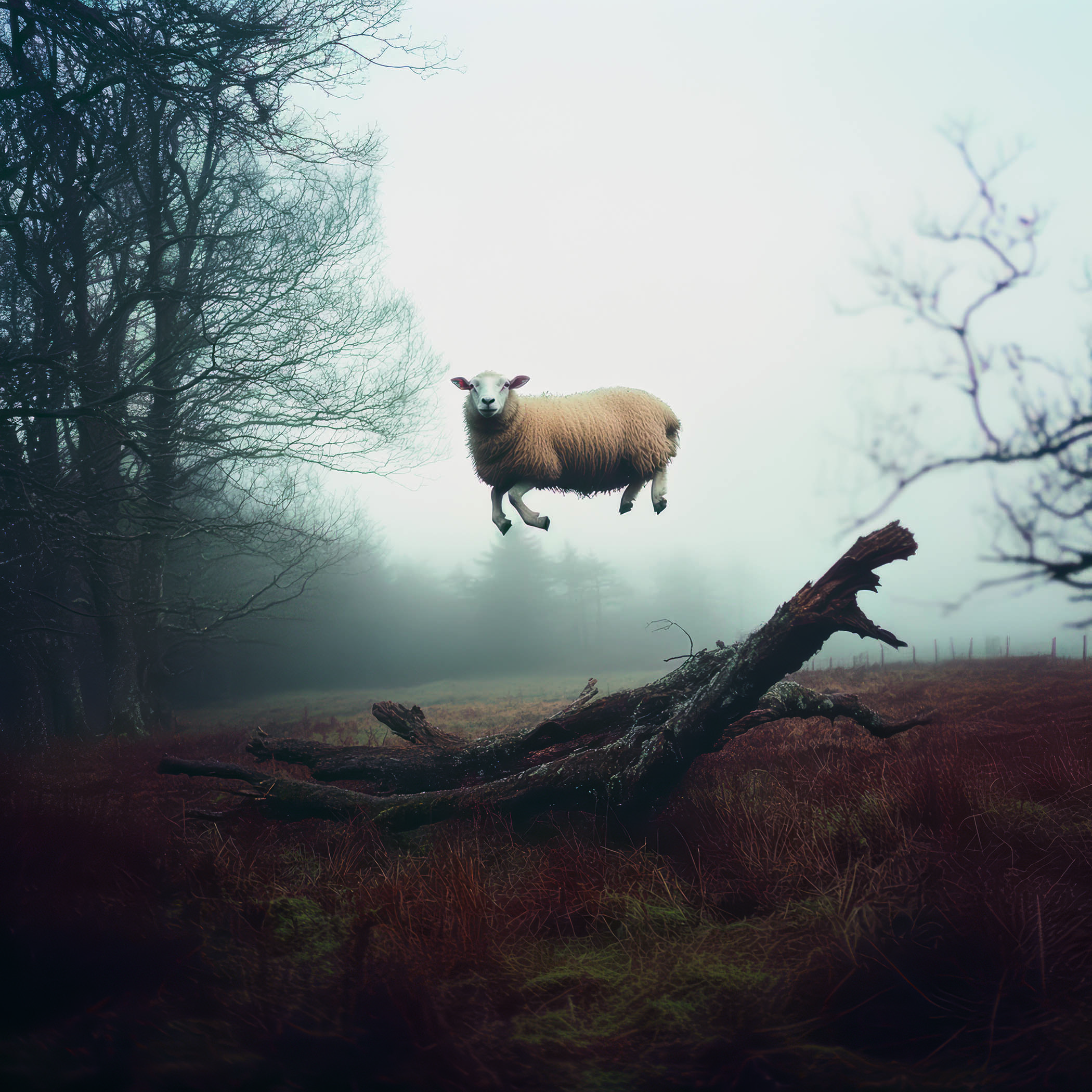
A leaping sheep in foggy wooland
“I’ve been on the receiving end of a fairly sizable amount of anger,” he admits with a grin over a video call from New York. “I got a nice message on Instagram [that said]: ‘Fuck you. Fuck your AI. You have no talent.’”
Embracing artificial intelligence as a means of generating images – this is Toledano’s third publication using the technology – raises hackles on multiple fronts: some people object to it on aesthetic or humanistic grounds, dismissing it as soulless “AI slop”; others worry about issues around data privacy and job displacements . But above all, there’s AI’s assault on whatever remains of our trust in the veracity of images – something Toledano is niggling at here with obvious glee.
Another England opens with an image of a sheep in a foggy field that could almost be taken as real. The leafless trees look entirely convincing, as does the sheep itself, were it not for the fact that the creature is hovering 12ft above the ground. The flock of starlings on the following page seems plausible, too, until we ask ourselves whether starlings are really capable of murmurating in perfect circles.

A murmuration of starlings in a perfect circle
After this relatively gentle lead-in, all pretences to realism fall away. People in a sedate Gloucestershire town walk around with hydrangeas for heads (in the accompanying text, this “floral mutation outbreak” is linked to a recent village flower show). In a Wolverhampton canal, a giant squid enfolds itself around a stricken car. A 60ft rendering of Margaret Thatcher’s face glares out from the white cliffs of Dover.
Toledano, who has lived in the US for 30 years, says he wanted to make a series about the England of his youth, but refracted through a surrealist lens and with political overtones. This is a version of the 1980s, bleeding into the present day , where a fox liberation army sets fire to Land Rovers and enterprising scarecrows are reviled for stealing jobs from real people.
No cameras were triggered in the making of this book; each image originated with a line of text. Toledano might tell the AI tool: “I want to see a cathedral. I want to see a waterslide going through it. Show me that image. OK, now tweak it this way and that way.”
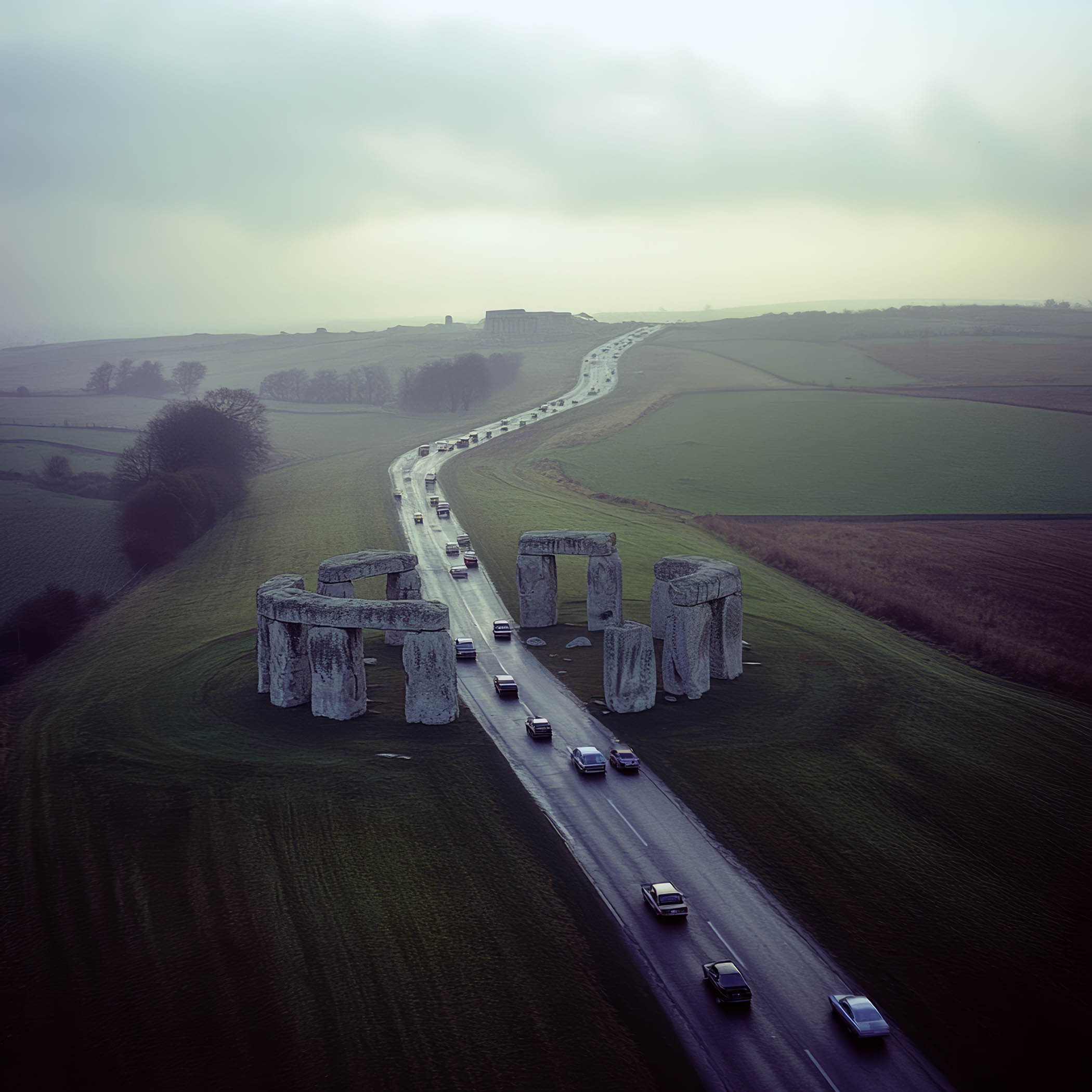
Carving a path through Stonehenge
The initial prompt is just the start of a long process of refining – it might take a few days or couple of weeks – that Toledano likens to “working with a very talented but really drunk person. As an artist, I’m used to an incredible exactitude in what I produce, but with AI, you have to have cerebral elasticity. Sometimes, it will give you an idea that is slightly adjacent to what you want, and you have to be elastic enough to go: ‘Oh, this isn’t exactly what I was asking, but this is an interesting wormhole I can go down.’ Other times, you have to bludgeon it a bit. It’s like whittling a stick.”
He does all the work, right up to the final edit, on his mobile device. “People always think I’m sitting in front of some giant mainframe, but it’s just me and my bloody phone. It means that I can make art anywhere.”
Part of his motivation for swapping his camera for AI is the sheer pleasure of being able to turn his wildest imaginings into photorealistic images. “It’s like being a wizard,” he says. “It’s like you’re half Gandalf when you’re working with Midjourney.”
He also wants to reflect the state of “cognitive imbalance” we experience as trust in image-making crumbles in the age of deepfakes. “When I started looking into AI three or four years ago, it became passionately obvious to me that our fundamental relationship with the image was going to change for ever,” he says, “and that this idea we’d had that photographs are truth – and I say that very loosely – was gone. And so, to talk about that idea, I have to use the thing that’s killing that idea, which is AI.”
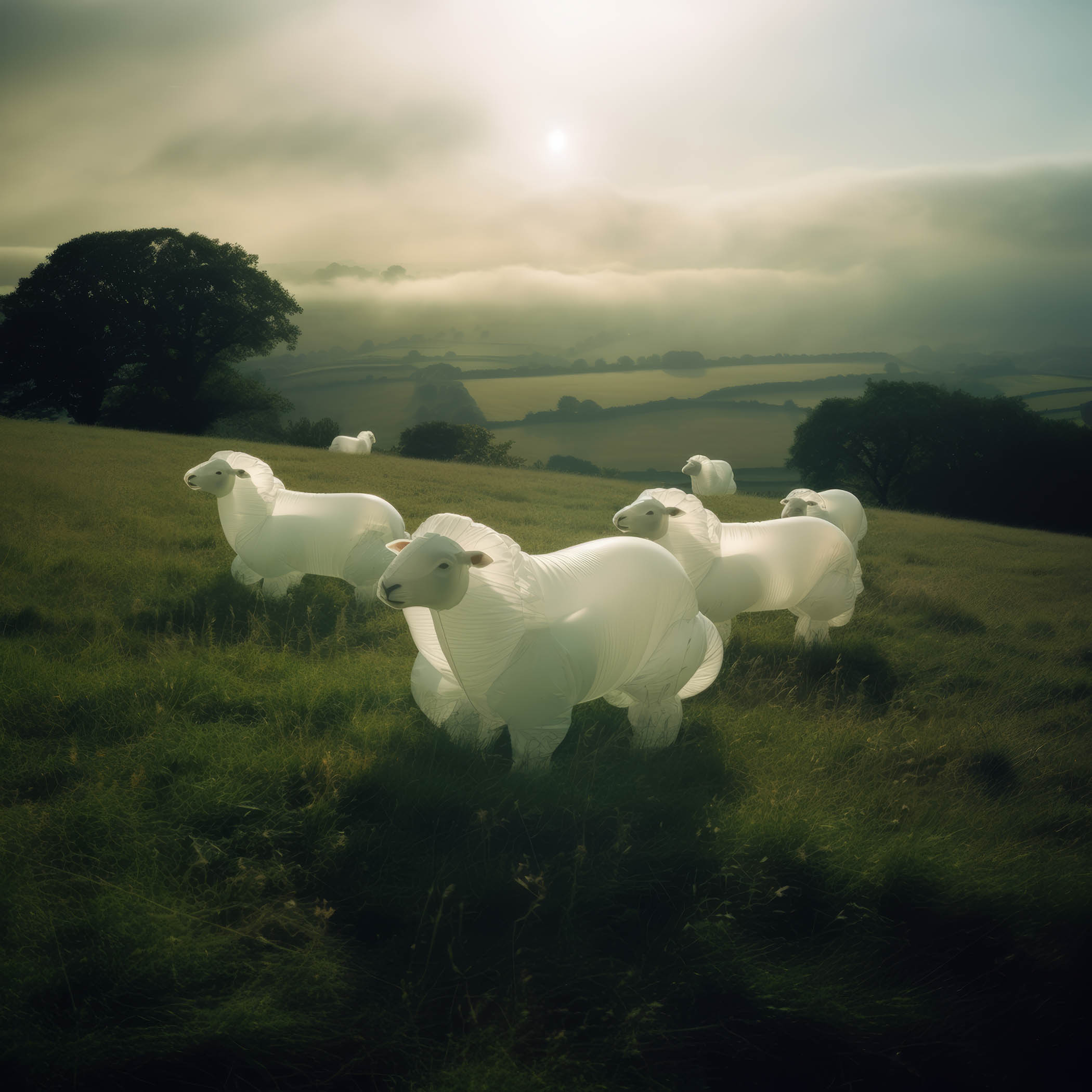
Inflatable sheep on a hillside
When I confront Toledano with some of the standard objections to the use of AI in visual art, beginning with data privacy, he shrugs them off briskly enough. “Early on, people talked a lot about the idea of copyright and how everyone’s images have been used without permission to train AI models, but I don’t hear that so much any more,” he says. “And I don’t really care, because I feel like the technology is so extraordinary, it gives people and artists an opportunity to make incredible things.”
But what about all the specialists – I’m thinking of the makeup artists, photo assistants and actors he hired to produce Maybe – who lose out on employment when everything is outsourced to AIs (and the giant corporations that run them)?
He nods. “I was giving a talk the other day and someone said: ‘Why can’t you make the images like [the US photographer known for his cinematic productions] Gregory Crewdson?’ I said: ‘First of all, I do not have the Crewdson budget. And even if I did, I couldn’t make images with the scope [of those in Another England] – I couldn’t make birds fly in a circle.’”
As for the lack of humanity that people perceive in AI art, he says: “That’s exactly what painters and philosophers said about photography in the 1850s: ‘It’s a machine taking the image, it will never have feeling.’”

Water park worship
A lot of these objections will fall away as the technology beds in, he believes. “If you look at the history of photography, at every juncture, there’s a percentage of enraged natives railing against change. Think about Stephen Shore shooting colour photography in the 1970s and outraged photographers saying black and white is the only true art form. Same with digital photography, and Photoshop. I remember when Instagram happened, so many photographers were upset because they felt like it was going to devalue the nature of what they were doing. So at every juncture, there are people who are upset about the change.”
But is Toledano himself overstating the scale of this change? On the first page of Another England, he writes (with the help of an AI chatbot, naturally) that “the existence of AI has made everything true, and nothing true, simultaneously. Facts are now infinitely elastic.” Max Houghton, who runs the master’s in photojournalism and documentary photography at the London College of Communication, disputes this.
“It’s just simply incorrect,” she says. “Of course it hasn’t made everything and nothing true simultaneously. It’s not the case that facts are now infinitely elastic. There are still facts.” What’s more, she adds, fakery has been part of photography from its earliest incarnations; it’s not like our trust in the medium was happily intact until AI came along.
Toledano likens the technology to ‘working with a very talented but really drunk person’
Houghton sees value in artists using AI to say things about the technology and its impact, but she feels Toledano’s book falls short for various reasons, including a lack of transparency around its process. “This is work that’s created by text prompts. And in my opinion, if you’re trying to do something creative with AI at the moment, and to question ideas of truth, then I need to see the prompt. I need to see what you asked AI to do. I need to know what your own parameters are, as an author.”
Transparency hasn’t been a notable feature of Toledano’s work with AI thus far: his approach to issues around veracity tends to be more pranksterish than scholarly. Last year, he used AI to conjure up the “lost photos” that Robert Capa took on the landing beaches in Normandy in 1944, filling the gaps with images of soldiers en route to D-day and its bloody aftermath. At a talk he gave at an exhibition in France, he presented them at face value, only afterwards revealing to the audience that they were fakes.
Part of his intention was to counteract the notion that all AI images were soulless. “I wanted to make convincing imagery that had real power and emotion, and if you walked in off the street and you saw these, you would feel moved.” The fact that people were taken in by them, even momentarily, delighted him.
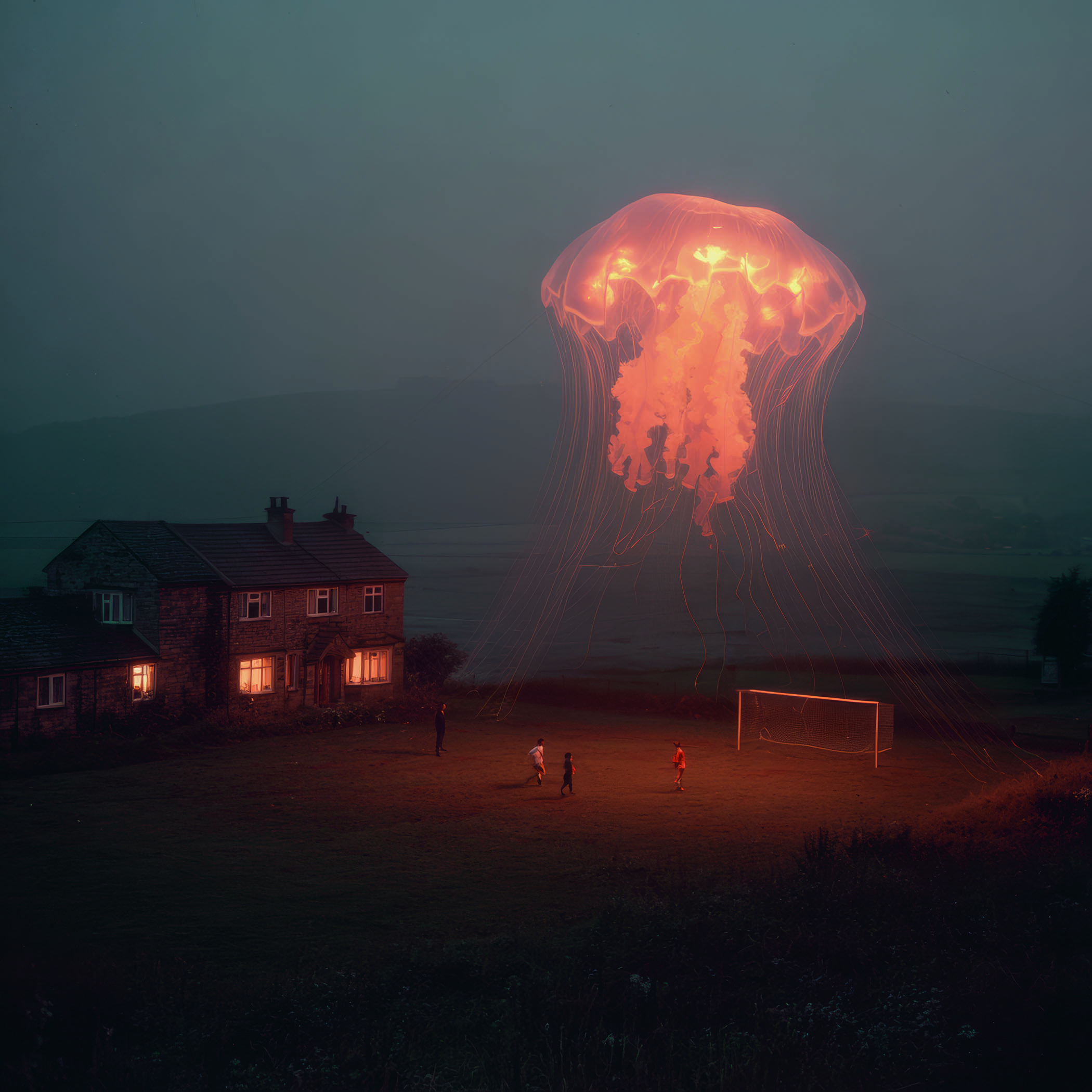
A spectral spectator illuminates a playing field
That said, he doesn’t believe just anyone can churn out striking images of levitating sheep or plausible rip-offs of Capa war photos. “If you want to make great images with AI, you have to be a really competent photographer,” he argues, “because you have to understand what makes a good image. You have to understand the idea of light and time of day and weather and narrative and structure within the image and the composition – all that stuff. You have to be incredibly awake for the process.”
Toledano tells me his years as a photographer are behind him now: he is a fully signed-up “evangelist” for AI image-making, whatever the ethical pitfalls. “I just find it a marvel, to be able to roam so freely. If you’re an artist, why wouldn’t you want to just see how that feels? And if it’s not for you, that’s fine.”
The only moment he sounds nostalgic for his past methods is when he recalls the process of creating different futures for himself in Maybe. “The greatest part of doing that work was being those versions of myself and seeing how the world saw me. I was 45 at the time, and you go from being 45 to 95 in the space of three or four hours, and you’re being rolled around by a nurse in a wheelchair … I realised how invisible I was as a nonagenarian. People didn’t see me, and to feel that for a couple of hours was really extraordinary. I never would have felt that if I’d done it with AI.”
Another England by Phillip Toledano is published by L’Artiere (€55)
